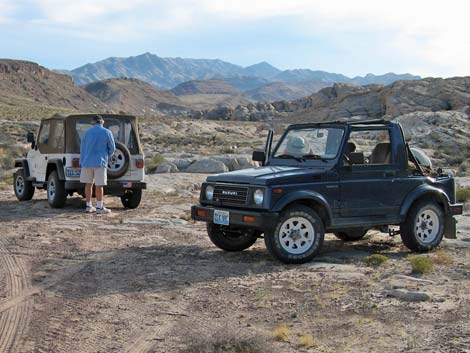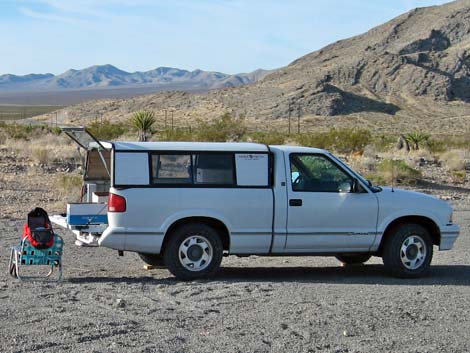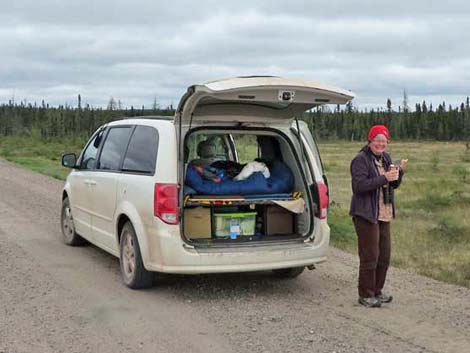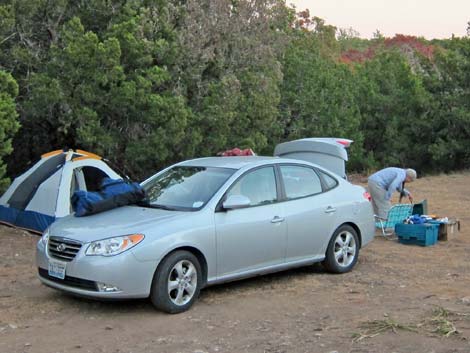
General Caution: When out driving, remember that as long as your vehicle keeps moving, everything will be fine. But the minute it stops because of flat tires, a busted oil pan, or just stuck in the sand, your life can be in danger. Be prepared with enough food and water. Stay with your vehicle because it is easier for rescue personnel to find a vehicle than it is to find a hiker. Lie on the ground under your vehicle for shade.
 |
Four-Wheel-Drive High-Clearance (4WD-HC) Vehicles. 4WD vehicles have power applied to the rear tires all the time, but power can be applied to the front wheels when desired. 4WD vehicles generally have considerable clearance, and vehicles of this type are suitable for 4WD-HC roads. When evaluating a 4WD, sometimes short-wheel-base (SWB) versus long-wheel-base (LWB) becomes an issue. Wheel-base refers to the distance between the front and rear axles, and SWB often is useful for tight turns, dipping through steep washes, or climbing over large rocks. In difficult situations, a Jeep or Suzuki Samurai are much more efficient than a crew-cab long-bed pickup. To me, the value of a 4WD is not to push the limits of the vehicle, but rather having the freedom to drive on roads where I might get stuck in 2WD. Some people disagree, saying that a 4WD only gives you the opportunity to get really stuck in a really remote place. I usually drive in 2WD until the tires start slipping or I get stuck, then shift into 4WD and drive on or turn around, depending on the situation. |
 |
Two-Wheel-Drive High-Clearance (2WD-HC) Vehicles. 2WD-HC vehicles have power applied to only two of the wheels, either the front two or the back two, but they do have good ground clearance. Vehicles of this type often are suitable for 2WD dirt roads and two-track roads. |
 |
Two-Wheel-Drive Medium-Clearance (2WD-MC) Vehicles. 2WD-MC vehicles have power applied to only two of the wheels, either the front two or the back two, and they have moderate ground clearance. All-Wheel Drive (AWD) Vehicles. AWD vehicles, similar to 4WD vehicles, have power applied to all four wheels. This gives better traction than 2WD only, but most of these vehicles (e.g., Subaru Forrester) only have medium clearance. Vehicles of this type often are suitable for 2WD dirt roads and some two-track roads, but as a general rule should not be driven on 4WD roads. |
 |
Two-Wheel-Drive Sedan (2WD) Vehicles. Sedan-type vehicles are 2WD or AWD vehicles built for driving on paved roads. These vehicles usually sit low to the ground to improve gas mileage. Sedans can be suitable for well-graded dirt roads or when driven carefully on less well-graded roads. Vehicles of this type often can be driven carefully on 2WD dirt roads. |
Happy hiking! All distances, elevations, and other facts are approximate.
![]() ; Last updated 250112
; Last updated 250112
| Main Glossary | Hiking Around Las Vegas | Copyright, Conditions, Disclaimer | Home |